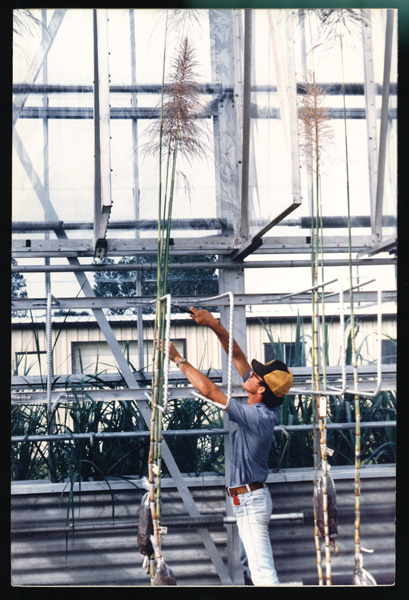
A TRADITION OF RESEARCH
Research has been and remains vital to the survival of the sugar industry. The Audubon Sugar Institute and the Sugar Experiment Station, which merged in 1988, have been key players along with the U.S. Department of Agriculture (USDA) in sustaining the tradition of research which revived the industry when it was nearly wiped out by the mosaic virus in the 1920's.
Responding to the need for disease-resistant hybrids, the USDA established stations at Canal Point, Florida, in 1919, and Houma, Louisiana, in 1926, where researchers developed breeding and testing programs. The program at Houma received a major boost in 1949, when photoperiod control of flowering was discovered by LSU researchers Dr. St. John Poindexter Chilton and Dr. Clayton C. Mooreland. Louisiana is too far north for sugarcane to flower naturally, but with photoperiod control - which in essence fools the plants into flowering by artificially altering day length - crosses could be made in greenhouses on the LSU campus. This program remains in full swing today at the St. Gabriel Research Station, where 80,000 new varieties are grown each year in facilities that were constructed in 1982.
Research in other areas, such as Integrated Pest Management (IPM) and alternative uses of industry by-products, is also conducted at the Sugar Experiment Station and in a number of related academic departments at LSU. Research findings are communicated to practitioners via the Louisiana Cooperative Extension Service, trade publications, and field days, at which they can interact with the researchers and learn about new techniques.
Items displayed in case 10:


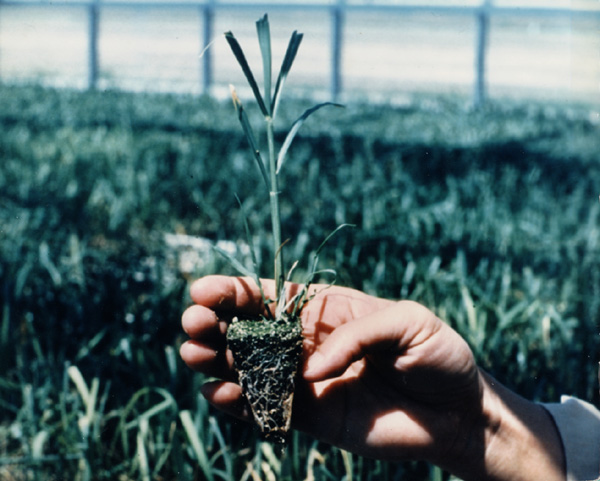
Exterior view of photoperiod greenhouse and plants on carts, St. Gabriel Research Station. Photograph by John Wozniak, LSU Agricultural Center
Flowering sugarcane plants on cart, St. Gabriel Research Station. Courtesy of Audubon Sugar Institute
An example of Integrated Pest Management in which Lepidopterous larvae on sugarcane weeds provide alternate food sources to build up early season fire ant populations and enhance control of the sugarcane borer. Courtesy of LSU Department of Entomology
Dr. Jeff Hoy at the 4th Annual LSU Area Sugarcane Field Day, July, 1986. Photograph by John Wozniak, LSU Agricultural Center
Photograph of the first cane grown from seed in Louisiana, 1907. LSU Photograph Collection, Audubon Sugar School, Louisiana and Lower Mississippi Valley Collections
Sugarcane Research Annual Progress Report, 1994. Courtesy of Audubon Sugar Institute
"Sugar Cane. (Field Experiments)," in Louisiana Bulletin No. 14 (January, 1888). Courtesy of Audubon Sugar Institute
"Sugarcane Smut in Louisiana: Biology and Control," in Louisiana Bulletin No. 839 (April, 1993). Courtesy of LSU Agricultural Center
TECHNOLOGY AND GROWTH
Despite many peaks and valleys, commercial sugar production in Louisiana has grown steadily from a humble beginning of less than 5,000 tons in the late 1700's to a record high of more than 1,000,000 tons in 1994. No single factor has influenced this growth as much as technology.
The process of converting field cane into refined sugar has many phases: planting, cultivation, harvesting, loading, transporting, unloading, extraction, clarification, separation, and refining. Each of these phases has seen an evolution from manual to animal power and finally to full mechanization. This move towards mechanization has freed the industry from the limitations imposed by the availability of a labor force and allowed a steady increase in the acreage devoted to sugarcane. A major breakthrough occurred following World War II when the mechanical harvester was introduced commercially. Proclaimed to do the work of 200 workers, it gained rapid acceptance and changed the face of the industry.
Similar economies of scale led first to a shift in the 1800's from plantation sugar houses to large centralized sugar factories and refineries, and then to a steady decline in their numbers throughout this century. This trend continues today, as can be attested to by the recent closing of the Supreme Sugar Refinery, leaving just two commercial refineries in Louisiana.
Items displayed in case 11:

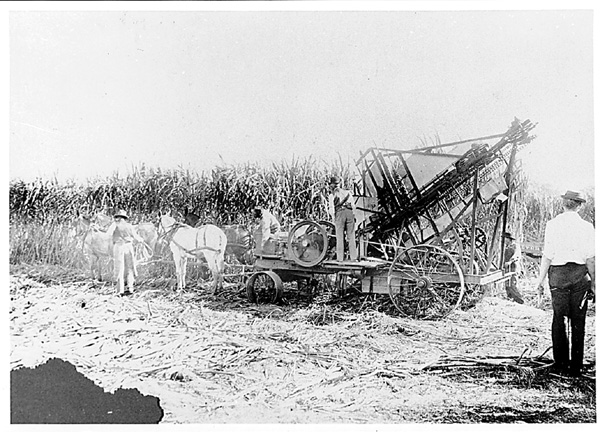

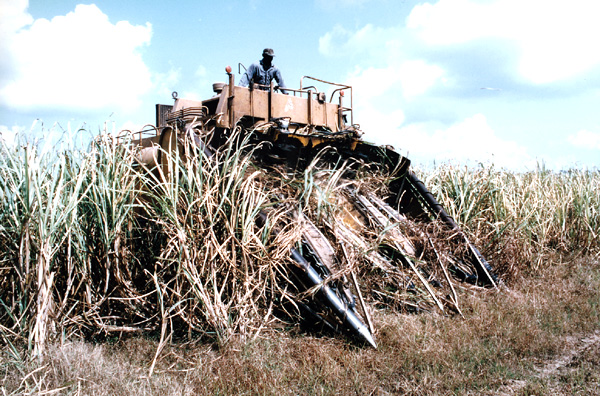
Vacuum Pan, reproduced from Catalogue of Sugar Cane Machinery, Steam Engines, Etc, Cincinnati, Blymyer Iron Works Co., June 1, 1886. Louisiana and Lower Mississippi Valley Collections TP381 B44 1886
Multiple Effect, reproduced from Traite theorique de la fabrication du sucre, by Paul Horsin-Deon. Paris, E. Bernard, 1882. Rare TP390 H78
Centrifugal, reproduced from The Diffusion Process in Louisiana and Texas, by J. B. Wilkinson, Jr. New Orleans, L. Graham & Son, 1889. Louisiana and Lower Mississippi Valley Collections TP382 W55
Bagasse Burner, reproduced from The Diffusion Process in Louisiana and Texas, by J.B. Wilkinson, Jr. New Orleans, L. Graham & Son, 1889. Louisiana and Lower Mississippi Valley Collections TP382 W55
Photograph of manual planting, 1940's. Courtesy of LSU Agricultural Center
OVERCOMING ADVERSITY
Overcoming adversity has been a way of life for the Louisiana sugar industry. Of all threats, one of the most vexing has been federal legislation. The federal government has been a fickle suitor to the industry, establishing and eliminating support with annoying regularity. The American Sugar Cane League has made it its mission to play watchdog and coordinate efforts to lobby for support in Washington.
Mother Nature has also been unkind at times; floods, droughts, hurricanes, and hard freezes have had a crippling effect upon the sugarcane crop. In earlier years, sugarcane growers responded cautiously to these devastations by planting conservatively, thus guaranteeing a slow recovery in productivity. Following the hard freeze in 1989, however, they aggressively planted all their acreage, leading to the dramatic recovery. The threat from disease began escalating in the early part of this century when contaminated sugarcane varieties were imported from other countries; the damage was compounded when two or more diseases attacked in concert. In the 1980's, researchers developed a new procedure, using disease-free tissue culture in mass propagation of healthy seed cane, that has gone far in reducing this threat. Pests such as the infamous sugarcane borer, Diatraea saccharalis F., are controlled with insecticides and through Integrated Pest Management (IPM). An IPM success story is the fire ant (Solenopsis invecta Buren), an insect only a sugarcane grower could love; it seems one of their favorite meals is the sugarcane borer.
Items displayed in case 12:
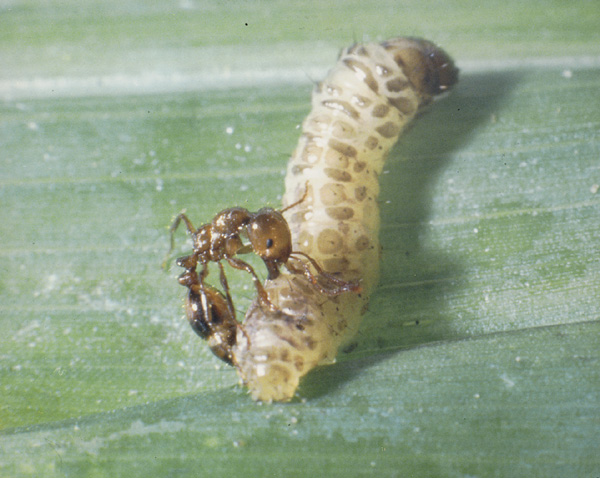
Red Rot disease, reproduced from Sugar-Cane Diseases of the World, ed. by J. P. Martin, E. V. Abbott, and C. G. Hughes. New York, Elsevier, 1961. Courtesy of Dr. Jeffrey Hoy
Mosaic disease, reproduced from Sugar-Cane Diseases of the World, ed. by J. P. Martin, E. V. Abbott, and C. G. Hughes. New York, Elsevier, 1961. Courtesy of Dr. Jeffrey Hoy
P.O.J. varieties, from Louisiana Hails P.O.J., Illinois Central System Publication. Reproduced from: Henry C. Minor Estate Partnership Papers, Mss. 1509, Louisiana and Lower Mississippi Valley Collections
Photograph of frozen cane field. Courtesy of Audubon Sugar Institute
Photograph of freeze-damaged cane, 1989. Courtesy of Audubon Sugar Institute
Hurricane-damaged cane. Photograph by John Wozniak, LSU Agricultural Center
Ratoon Stunting Disease, in Sugar-Cane Disease: A Guide for Field Identification, by Hideo Koike. Rome: Food and Agriculture Organization of the United Nations, 1988. Middleton SB608 S9 K64 1988
Photograph of adult female moth of sugarcane borer. Reproduced from: Charles E. Coates Papers, Mss. 2283, Louisiana and Lower Mississippi Valley Collections
Photograph of man spraying cane field, 1930's. Courtesy of LSU Agricultural Center
Print of Eutheola rugiceps, commonly known as the Sugarcane Beetle. Courtesy of Elaine Smyth
The Sugar Bulletin, Official Bulletin of the American Sugar Cane League of the U.S.A. (May, 1995). Louisiana and Lower Mississippi Valley Collections SB215 S89, vol. 73, no. 8
THE CANE IN LOUISIANA
Sugarcane, or Saccharum, grows naturally in tropical areas. Believed to be native to New Guinea, sugarcane can now be found in parts of Asia, Africa, Europe, and Central, South, and North America. Generally, at least three annual crops can be harvested from a single planting, the original plant cane crop plus two or three additional cuttings, called "ratoon" crops. Sugarcane can grow to tremendous heights. Experimental varieties have exceeded 20 feet, but for commercial varieties grown in Louisiana, heights of between six and nine feet are the norm.
Because Louisiana is far north for sugarcane, growers are faced with a shortened growing season (approximately nine months) and potential weather hazards. Thus, certain traits are required for commercial varieties to be successful, such as early maturation, frost-resistance, and heartiness. High sugar yield is particularly important because sugarcane is immature when harvested in Louisiana.
For over 100 years (from 1825 to 1926), the Louisiana Purple and Louisiana Striped varieties dominated the industry. When those varieties fell prey to disease, the breeding program was intensified and a procession of thousands of hybrid varieties began which continues today. So many are developed each year that naming them all is impossible, and a new system for identifying the varieties had to be developed. Today, a combination of letters and numbers indicates the place and year of origin for each.
Items displayed in case 13:
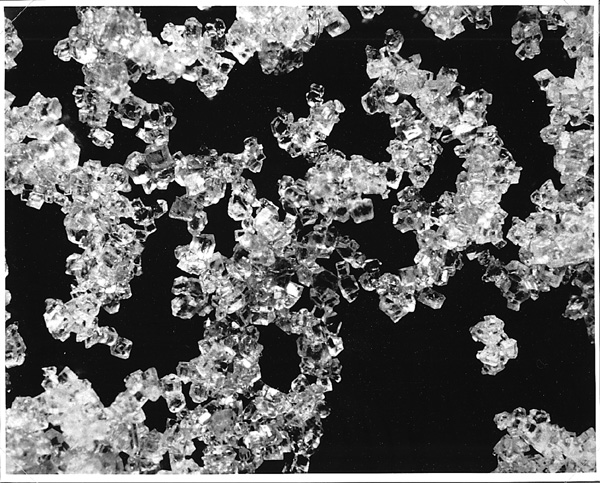
Sugarcane Stalks. Courtesy of Audubon Sugar Institute
Modern cane harvester in action. Photograph by John Wozniak, LSU Agricultural Center
Polariscope, with syrup sample tube, for determining sugar content, early 20th Century. Loan, LSU Rural Life Museum
Photograph of chemistry classroom at LSU with polariscopes set on lab bench, 1909. Loan, LSU Rural Life Museum
Baume Syrup Hydrometer (2-piece wood container) used to determine water and total solids (density) of a solution. Loan, LSU Rural Life Museum
"Canne Sucre," from Precis sur la canne et sur les moyens d'en extraire le sel essentiel, by Dutrone de La Couture. Paris: Duplain, Dubuisson, Debure, Le Jay fils, De Senne, 1790. Rare TP376 D8
"Sugar Has Myriad Uses," reproduced from Sugar: Facts and Figures. New York: United States Cuban Sugar Council, 1948. Middleton HD9100.5 U63 c.3
